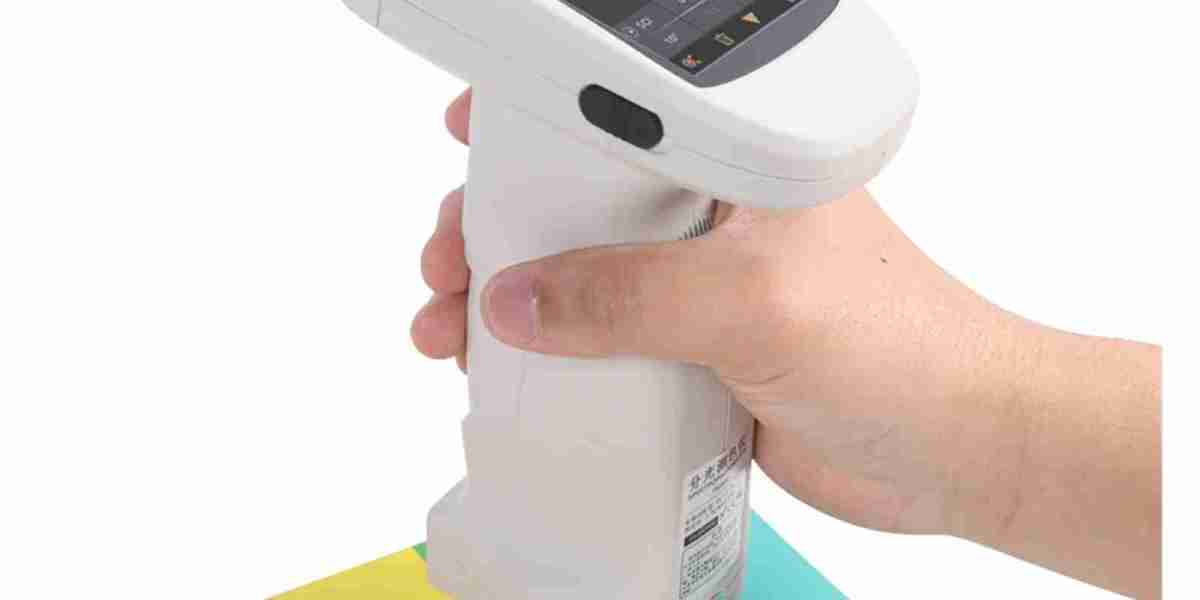The colorimeter market inhibitors represent a set of challenges that continue to hinder the widespread adoption and growth of color measurement technologies across global industries. Although colorimeters have become essential tools in various sectors—such as food and beverages, healthcare, manufacturing, automotive, and textiles—the market faces several structural, technical, and economic limitations. Understanding these inhibitors is vital for stakeholders aiming to unlock the full potential of the colorimeter industry and address barriers that impact accessibility, usability, and scalability.
One of the most pressing inhibitors in the colorimeter market is the high cost of advanced devices. Colorimeters, especially those with spectrophotometric features, multi-angle measurement, and integrated software systems, can be expensive for small- and medium-sized enterprises (SMEs). These businesses often operate under tight budgets and may not justify the investment unless color accuracy is central to their product or service. In developing economies, the high upfront cost becomes an even bigger hurdle, restricting penetration into price-sensitive markets where manufacturing and production industries are still growing.
Closely related to cost is the complexity of operation and maintenance. Modern colorimeters offer a range of features and require a certain level of technical proficiency to operate efficiently. In sectors where skilled personnel are limited or training budgets are constrained, the complexity of use becomes a barrier. Additionally, proper calibration, maintenance, and interpretation of data results require consistent attention and expertise. Without this, businesses may not realize the full value of their investment, resulting in underutilization or improper application.
Another major inhibitor is the lack of awareness and knowledge, particularly in emerging economies. While industries in North America and Europe have largely embraced the need for precision color measurement, many businesses in developing regions still rely on subjective visual inspection. This can lead to inconsistencies and poor product quality but persists due to a lack of education on the benefits of objective color measurement tools like colorimeters. Without targeted outreach and training programs, potential users may remain unaware of how these devices could improve quality control and operational efficiency.
Standardization and interoperability challenges also affect market growth. Color perception can vary based on light sources, viewing angles, and materials, and the lack of universal color measurement standards across industries creates discrepancies. For example, a color deemed acceptable by one company may be rejected by another due to differing standards or device calibrations. This inconsistency can result in rework, waste, or disputes in B2B transactions. Furthermore, integration between colorimeters and other systems such as ERP or quality management software is not always seamless, adding to operational friction.
Market fragmentation contributes to the inhibitors as well. Numerous manufacturers offer a wide range of colorimeter models, each with its own calibration methods, interfaces, and software systems. This variety, while beneficial in terms of options, can confuse potential buyers who struggle to compare products or find a device that meets all their specific needs. This confusion can delay purchasing decisions or result in choices that do not fully address a company’s requirements, leading to dissatisfaction and reduced market confidence.
The limited adaptability of colorimeters in certain environments is another inhibitor. For example, harsh industrial conditions involving extreme temperatures, dust, or moisture can affect the performance and lifespan of sensitive color measurement devices. Although rugged versions exist, they are often even more expensive and less flexible. In some cases, businesses may opt for simpler or alternative measurement tools that sacrifice accuracy for durability and ease of use.
Additionally, rapid technological changes can be both a driver and a barrier. As innovations in artificial intelligence, IoT integration, and portable design evolve, earlier models quickly become outdated. This creates pressure on buyers to continuously upgrade, leading to hesitation and longer replacement cycles. For smaller businesses, keeping up with technological trends without a clear return on investment is difficult, thus slowing market growth.
Environmental and regulatory barriers also play a role. In some regions, importing high-precision measurement tools can be subject to complex customs regulations, tariffs, or compliance requirements. Manufacturers need to meet environmental standards in production and packaging, which can increase costs and slow down delivery. These challenges reduce market fluidity and discourage smaller players from entering or expanding in certain areas.
In conclusion, while the global colorimeter market holds immense potential, various inhibitors limit its current growth and adoption. From high costs and operational complexity to awareness gaps and interoperability issues, these challenges must be addressed to unlock broader usage across industries. Strategic efforts focused on lowering device prices, simplifying user interfaces, educating potential users, and promoting global measurement standards can help overcome these hurdles. As more stakeholders collaborate to minimize these barriers, the colorimeter market will be better positioned to meet rising demands for color precision, quality control, and product excellence worldwide.



